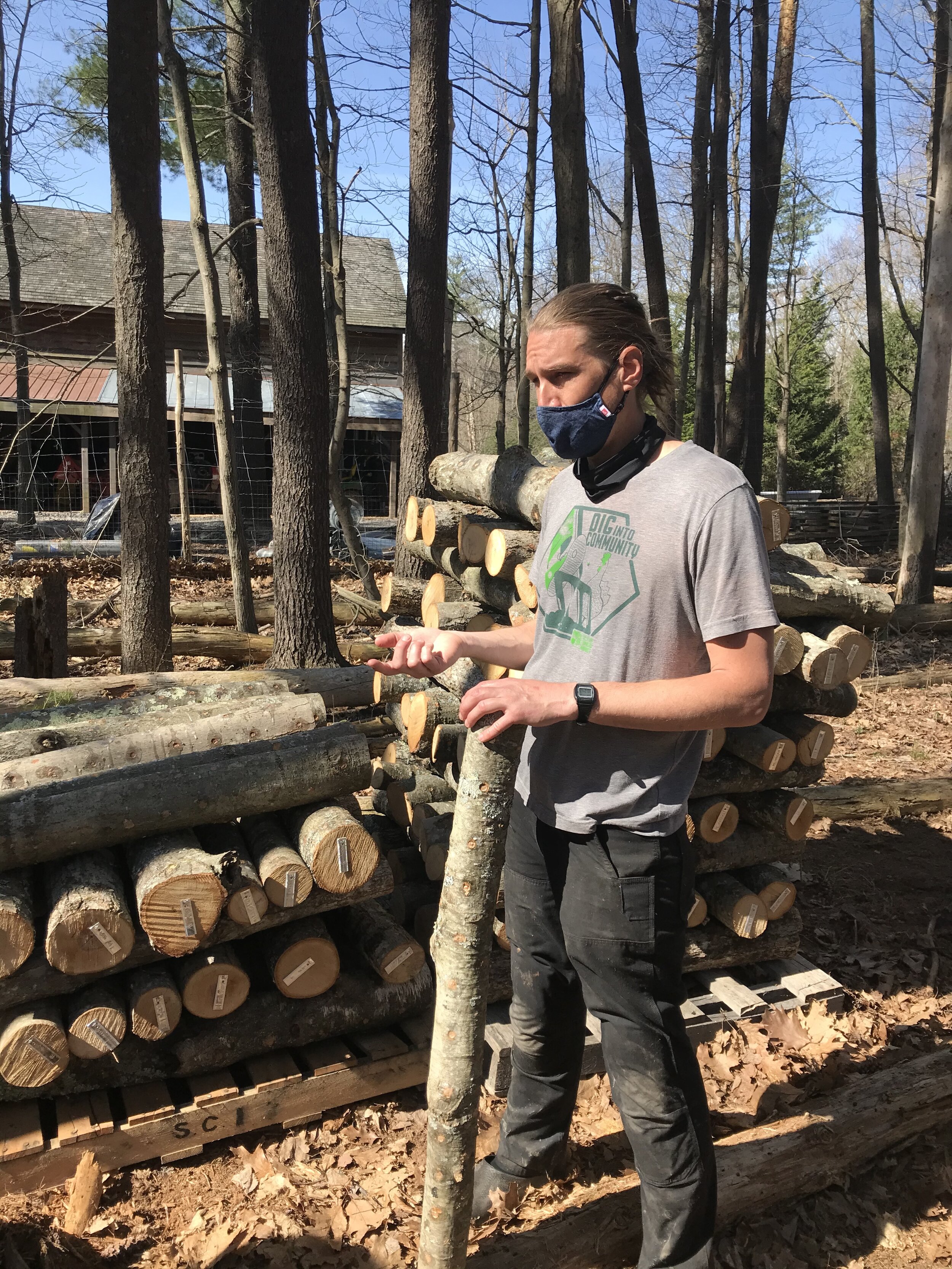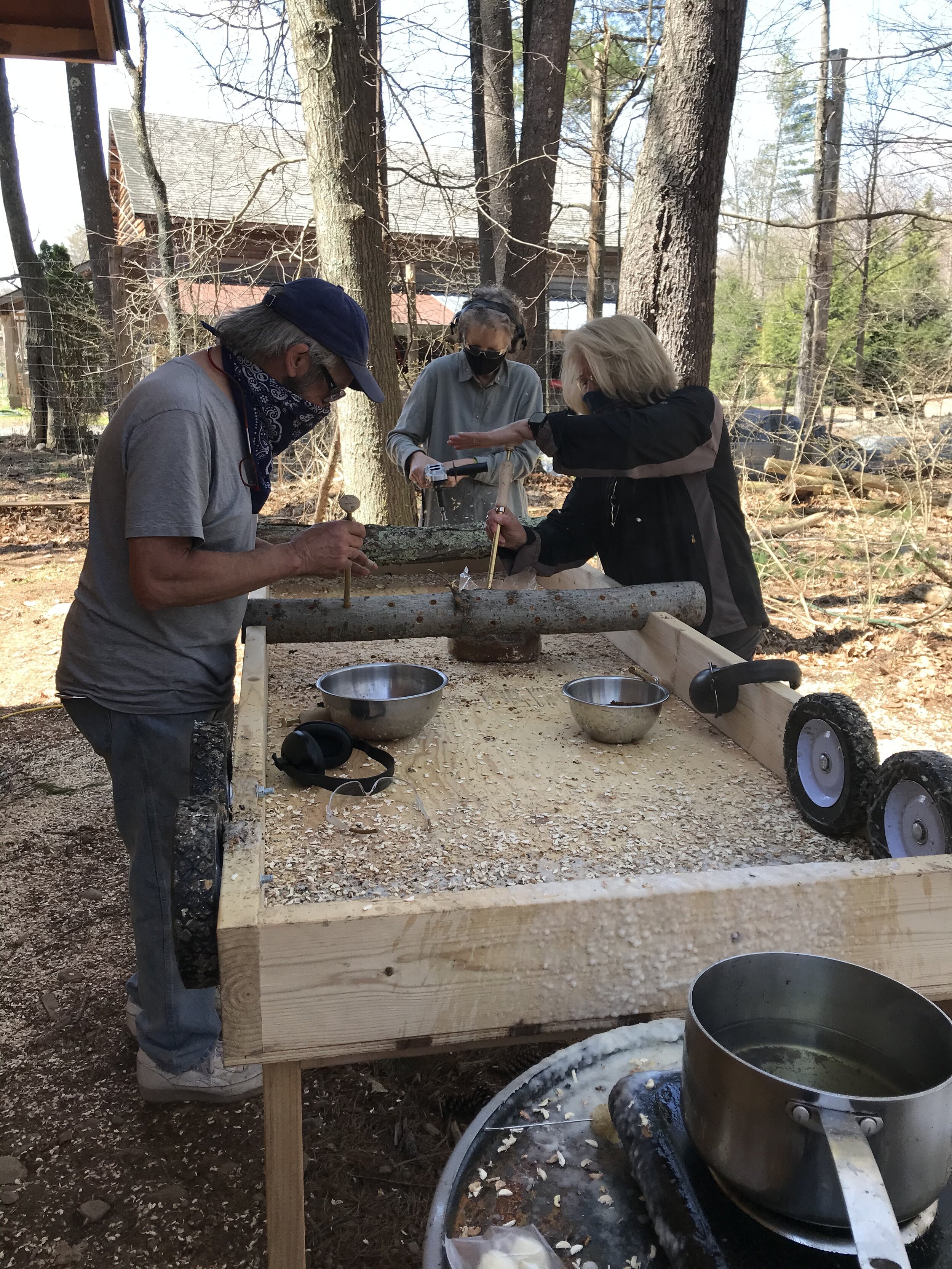Annual Mushroom Inoculation!
We love mushrooms! Why else do we choose to grow these fun guys? There are too many reasons to list, but we can start with the obvious: mushrooms are delicious, versatile, savory, and good for the body. Consuming mushrooms provides your system with powerful antioxidants, gut-healing fiber, and energy-boosting minerals & proteins. Fungi are an earthy treat that are easy to grow...and, another major plus, you don’t need to weed a mushroom crop!
Inoculation, in its scientific terms…
means to introduce a microorganism to a suitable situation for growth. In our case, we have taken the spawn of shiitake and relocated them into white oak logs: specifically, fresh logs that are cut less than 1 month prior to the inoculation. This timing is crucial because if the logs are too old, other mycelium cultures can inoculate the logs naturally. The length and size of the log also play a part. This season, we used logs that were 4-6 inches in diameter and roughly 3-4 feet long. Since we will be moving these inoculated logs around throughout the year, we limit the length for ease of movement. The longer the log the heavier the log.
We sourced our mushroom mycelium inoculant, Beltane shiitake, from Field and Forest. You can get this mycelium inoculant in a sawdust or “peg” form. We chose the sawdust version because we’ve had better luck with this form in the past. This is how we inoculated our mushroom logs:
First Stage
We lined 120 logs up to get ready for our three-part process. In the first stage, we drilled holes into each log, in a diamond-shaped pattern 4-6 inches apart using a special drill bit that was also sourced from Field & Forest Supply.
Second Stage
During the second stage, we took our mushroom inoculant (sawdust) and used a punch tool to insert a fair amount of the inoculant carefully into each hole.
Third Stage
We capped all of our holes with food-grade cheese wax. This step is crucial to keeping the inoculant inside the log, retaining moisture, and protecting the holes from insect damage. The whole process takes about 5-10 minutes/log.
We tagged our logs with metal tags so we remember that these specific shiitake mushrooms are called “Beltane,” and were inoculated in 2021.
Then we begin the waiting game, a collective practice in faith and patience, where we leave the logs to rest, outside and uncovered. It takes approximately 1 year before newly inoculated mushrooms can be harvested. In May 2022 we will “force the logs,” meaning we will completely submerge each of these logs in water for at least 24 hours. This makes the mycelium inside the log think that it is in perfect fruiting conditions, and subsequently, they are “forced” to produce spores, resulting in a crop of yummy mushrooms. We can “force” each log up to 4 times per year, allowing us to have a steady supply of shiitakes throughout our growing season.
Starting in Spring 2022, White Feather Farm will be your go-to source for fresh, delicious shiitakes!
After this season’s successful inoculation, we’re thrilled to begin inoculating mushroom logs every year. In April, we taught our staff and some lucky volunteers about the process, and are looking forward to sharing our knowledge with the community for seasons to come. Stay tuned for more mushroom-related information, tutorials, and volunteer days in the future. Below are some images from our volunteer day, courtesy of Candace Balmer!








